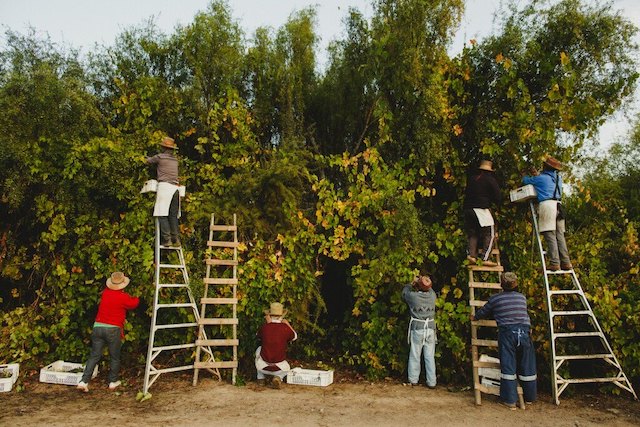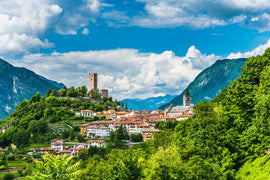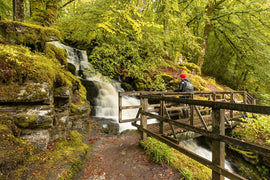South America
Keeping up with South American wine takes some effort these days. While budget Malbecs and Carmeneres will hopefully continue to line grocery store shelves, the viticultural trends and tensions playing out over this gigantic continent generate a dynamism that goes much deeper. This month we are featuring two outstanding examples of recent Latin American winemaking from families in Chile and Argentina whose roots in their respective regions date back to the 19th century. Both embody the interplay between tradition and innovation that makes the South America such a vital and ever evolving wine destination.
Winemaking in the Americas initially followed conquest and conversion. The first grapes and vines were brought by Spanish conquistadors in the 16th century, and planted and grown widely to ensure a steady supply of sacramental wine for Mass. Viticulture took to the continent so successfully that wine producers in Spain convinced King Philip II to restrict American production, and in 1595 the Council of the Indies imposed limits on wine production and vine cultivation. This proved hard to enforce and despite Phillip’s successors repeating the restrictions throughout the 17th century, local winemaking continued, albeit in diminished form. When the restrictions were finally lifted for good in the early colonial period, European wines flooded the market and overwhelmed the local product. It wasn’t until the 20th century that the modern South American wine industry, buoyed by the influx of French grapes flourishing in the Phylloxera-free soil of Argentina and Chile, began to export significant amounts of product. This was how the former became the largest producer of Malbec (known as Cot in France) and the latter Carmenere (another French grape originally from Bordeaux.)
Today, Argentina and Chile are the fifth and ninth largest contributors, respectively, to the 6.8 billion gallons of wine produced worldwide every year. The most important Argentine wine region is Mendoza, located in the eastern foothills of the Andes and featuring some of the highest altitude vineyards in the world. Mendoza has 167,704 hectares (414,405 acres) of vineyards – more than the regions of Bordeaux, Burgundy, and Napa Valley combined – and accounts for 70% of the country’s wine production. Within the Mendoza appellation there are three distinct sub-appellations that exhibit extraordinary diversity in soil quality, altitude, and climate: Maipu Valley, Lujan de Cuyo, and Uco Valley. Our red selection this month comes from Maipu, which features some of the oldest vines in Argentina and is renowned for its powerful and elegant Malbec and Cabernet Sauvignon.
From Mendoza, it’s just an hour’s flight over the mountains to Santiago, Chile, the capital city and the center of its wine world. Known as a winemaker's paradise, Chile has a perfect climate for growing vines, abundant water from melting snow, and a virtually pest and disease-free environment. The climate is very hot and dry in the north, and colder and wetter in the south. The proximity to the Andes creates a huge variation between daytime and nighttime temperatures, which is vital for the acidity levels of grapes. The dryness also makes it a natural hub for organic, biodynamic, and sustainable wine production; 75 percent of all exported Chilean wine is sustainably produced. The largest and oldest wine region is the Maule Valley, 250 miles from the capital and home to our white wine this month, a light skinned variant of the Pais grape (also known as Mission in California) which was the first widely planted wine varietal on the continent.
Salud!
The PlumpJack Wine Team
|
Region / Country of Origin: Mendoza, Argentina |
About the vineyards: Francesco Mosso arrived in Argentina from Turin, Italy, in 1860, leading a Piedmontese immigrant colony. The famiglia eventually settled in Mendoza, where they became devoted to viticulture. In 1909 the brothers Juan Bautista Mosso and Antonio Mosso finally built their own winery in Luján de Cuyo, with production capacity of five million liters. In 2002 Ernesto Mosso and Pablo Mosso, Juan Bautista and Antonio’s respective great-grandchildren, followed the family tradition and began producing wines in a winery located in Chacras de Coria. Their flagship wine is Malbec produced from the family’s old vines grown in Lunlunta. The vineyards are located 2,821 feet above sea level. About the winemaking: Light crushing, classic temperature-controlled fermentation during 7 days, using selected yeast. Pump-over and delestage during extended maceration of 20 days. 8 month: 30% volume in French oak first use and 70% volume in American oak second use. Suggested cellaring 5 years. Tasting Notes: Alluring color showing redish purple hues. Intense and complex aromas of red fruits, which harmonize with vanilla and mocha with reminiscence of fresh plums. Full bodied in mouth, its flavors lead to a polished and lingering finish. |
|
Winemaker: Ruben Sfragara |
|
|
Price: $27 bottle/ $291.60 case |
|
|
Suggested Food Pairing: Pairs well with a wide range of foods from beef and pork to game birds or even meat-based pastas and mature cheese |
|
|
Region / Country of Origin: Maule Valley, Chile |
About the Winery: Bouchon Family Wines began in the late 19th century when young viticulturist Emile Bouchon left Bordeaux, France for Chile. Today, Julio Bouchon and his children carry on their 4th generation family winemaking tradition in the Maule Valley. With their in-depth soil research and innovative winemaking, Bouchon is preserving the historic character of the Maule Valley with distinctive, terroir-driven wines. Each J. Bouchon wine is certified sustainable by the Wines of Chile Sustainability Code. The winery practices sustainable farming along with use of horse-plowed fields and dry farming to preserve their historic vineyards. About the winemaking: Pais Salvaje blanco is a wine born from a discovery within J Bouchon’s Pais ‘jungle’ vines (see photo at top of blog for shot of actual "vineyard"). After their first harvest of Pais Salvaje red in 2015, they realized that certain clusters of these wild vines were much lighter in color than others. They decided to harvest and vinify these lighter clusters separately. The wine is fermented and aged for 6 months in an ancient tinaja (clay amphora) with native yeast with no filtration. Tasting Notes: This is a wine of character. Copper yellow in color with fruity aromas of green apple and pear with a hint of earthy funk and white pepper. In the mouth it is very juicy and savory, with a long finish. |
|
Winemaker: Christian Sepúlveda |
|
|
Price: $23 bottle / $248.40 case |
|
|
Suggested Food Pairings: Enjoy with grilled fish, light sauced pasta or a fresh summer salad. |
|
Find similar articles
ArgentinaChileMalbecMendozaPaisSouth Americawine of the monthwine of the month club




